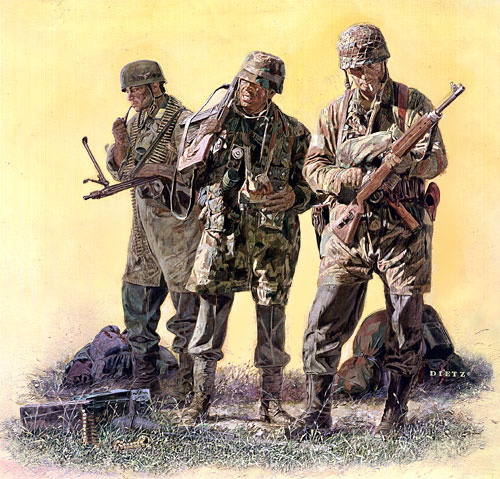
"Opposite Numbers" by Jim Dietz www.jamesdietz.com
One of the U.S. Army Airborne's founding members writes:
"...although the Germans took heavy loses at Crete...The Allies were very impressed .. This made them even more intent on establishing an Airborne Force.The Ironic thing was that Hitler was the one adversely affected by the heavy loses and never used his Airborne forces in a major way again . A lot of people think to his detriment.."
Today's Paratrooper lowers his equipment using the Hook, Pile Tape (VELCRO(c)) Lowering Line: a key "air item" because it stops the rucksack and if tandem rigged---the weapons case from falling to the ground when released by the Paratrooper at about 200 feet, after the 3rd Point of Performance. It unravels to 15 foot length and holds its equipment to the Paratrooper's parachute harness so it can land first, then the Paratrooper to reduce his impact jolt. The lowering of equipment was a British Airborne invention from WWII as the carrying of all combat gear on the Paratrooper was an American idea brought forward by the legendary General James M. Gavin while the American Airborne School was formed at Fort Benning, Georgia. All of these innovations the result of the German Airborne's difficulties encountered during the Battle of Crete in 1941.
THE U.S. ARMY AIRBORNE IN WWII: A MAJOR BUILD-UP
What many do not realize is that at the height of WWII, we had 5 AIRBORNE DIVISIONS; the 82nd-the "All Americans", 101st-the "Screaming Eagles", 11th-the "Angels" of the Los Banos POW rescue, 13th-the "Unicorns" and 17th-"Thunder from Heaven"
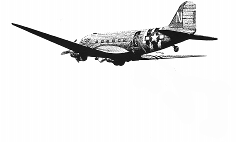
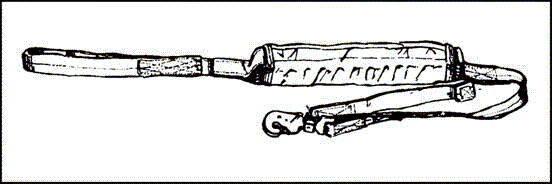
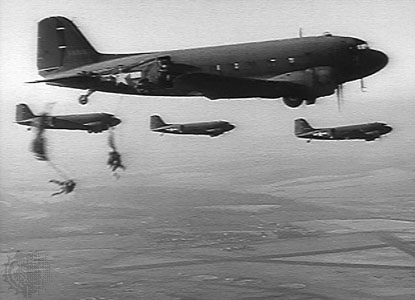
LESSONS FROM CRETE: JUMP WITH EQUIPMENT
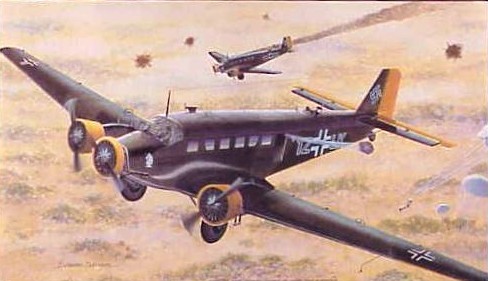
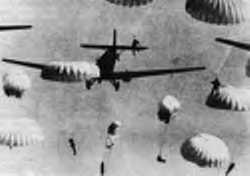
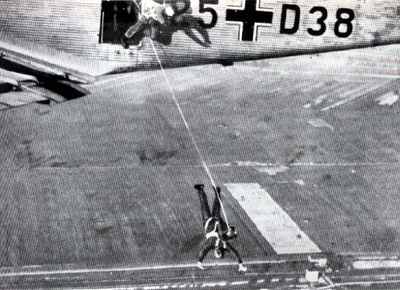
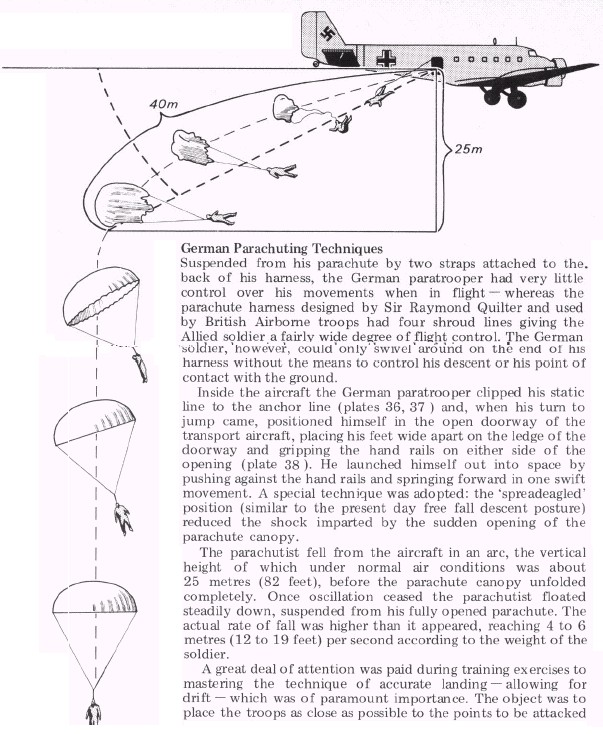
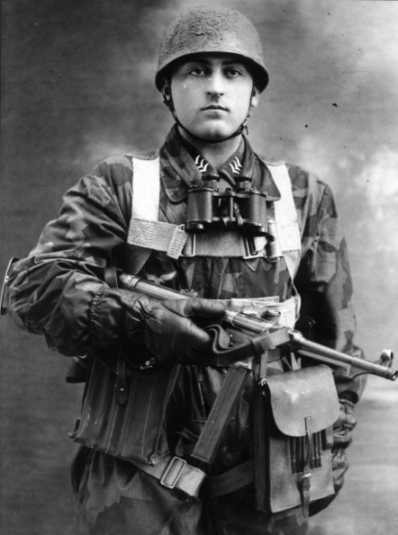
Notice he carries small set of binoculars to extend his vision--a good idea
Carrying all your "TA-50" came as a result from studying the German Fallshirmjaegers who jumped into the battle for Crete with only pistols and machine pistols, as their weapons were dropped seperately in containers with wheels. The Germans simply could not jump with all their combat equipment because of their parachute design and the door size of their JU-52 aircraft. Thus, they were forced to AIRLAND infantry troops to reinforce the Paratroops and these 3 things ruined the German Airborne in WWWII. These technoglitches are what destroyed the German Airborne in WWII; creating a dependancy on AIRFIELD SEIZURE to airland fully equipped infantry units (5 more men per JU-52). Make Paratroopers fully equipped by airdrop, make their parachutes streamlined on their backs so you can AIRDROP the same number as you can airland and then you can bypass airfields entirely as a bottleneck to project combat power. Its one thing to WANT airfields for follow-on forces, its another thing to NEED airfields because you can't get your force to the battlefield otherwise. There is a big differance here. In fact, the loss of faith by Hitler in his Fallschirmjaegers contributed to his defeat in Russia where he was just a few miles short of victory. And with Russia, Germany lost the war. How important are the technotactical details of war? Germany may have lost WWII due to faulty parachutes and small doors on their aircraft.
What wasn't known at the time by the Germans, and not until 1975, was that the German Codes were broken, and this "Ultra Secret" led the Allies to know the German Airborne was dropping onto the strategically important island of Crete, to include exact drop zones and times. Maybe they did know, for they called the mission; "Operation Merkur (Mercury--the winged messenger in Greek mythology). =o)
However, the WWI Victoria Cross winning, New Zealand General B.C. Freyberg, in charge of defending the island, assumed that the German Airborne couldn't seize the island unless sea reinforcements could arrive--a common Airborne myth that exists even today in the minds of conventional thinkers.
"......I do not wish to sound overconfident, but I feel that at least we will give an excellent account. With the help of the Royal Navy, I trust Crete will be held."Major-General Bernard C. Freyberg, VC
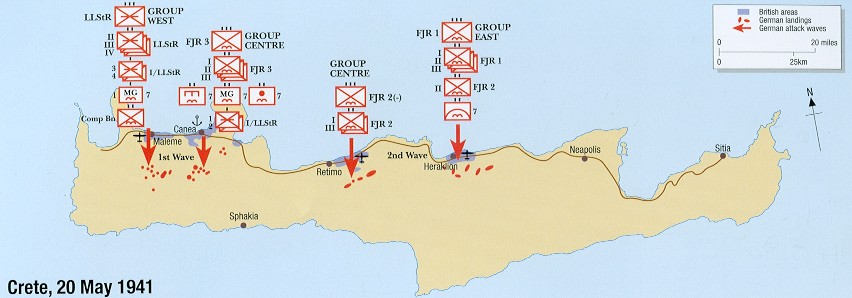
The German amphibious invasion fleet was sunk and defeated by the Royal Navy. The Navy did its job and the sea based reinforcements/resupply didn't come. Despite heavy losses due to their drop zones being compromised, the German Paratroops formed into mobile Kampfgruppes or "Battle Groups" and still routed the Allies anyway, dropping in their last remaining uncommited Paratroopers to solidify the one airfield they held, then air-landing untrained-for-Airborne-operations 5th Gebirgsjäger (Mountain troops) into the Maleme airfield; a bold operational-level-of-war gamble by German Fallschirmjaeger Commander, General Kurt Student to reinforce where he was most successful--to mass combat power.
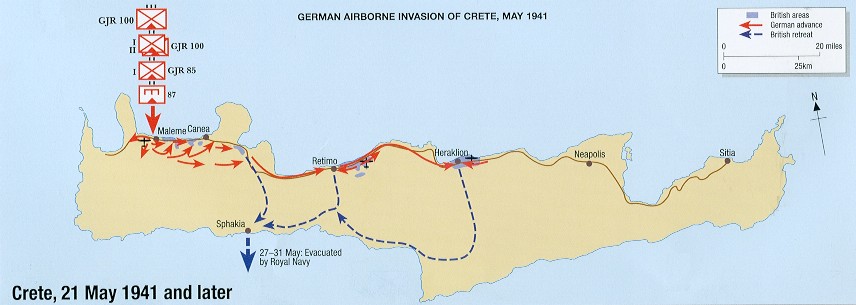
The 22nd Luftlande Division, specially trained to rapidly deploy by airlanding to exploit Paratrooper successes was unavailable in Romania defending the oil fields there, a factor that led to a slower offload from the JU-52 "Iron Annie" transport planes by Mountain troops, resulting in aircraft losses on the ground to the defender's fire. Fortunately the dusty conditions there created a sort of "smokescreen" that saved many men and aircraft--an idea that good tacticians should employ on purpose with smoke generating aircraft and ordnance preceding Airborne assaults.
MOVE RAPIDLY FROM THE DROP ZONE: AIR-MECH-STRIKE!
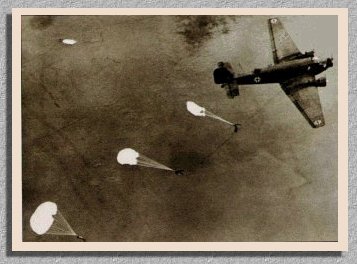
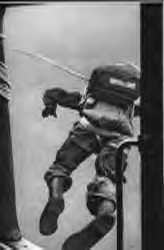
AIR: JU-52 tri-motor aircraft airdrop (left jump door, bomb-bay, wing shackles) or airland the German Fallschirmjaegers and their equipment (right cargo door)
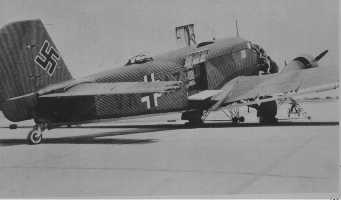
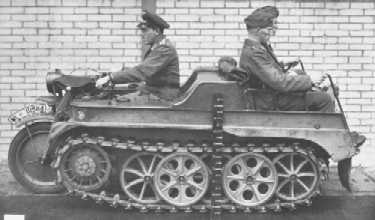
MECH: Kettenkrad SDKFZ2 motorcycle half-tracks delivered by JU-52s towed Paratroopers and recoilless rifles across the island
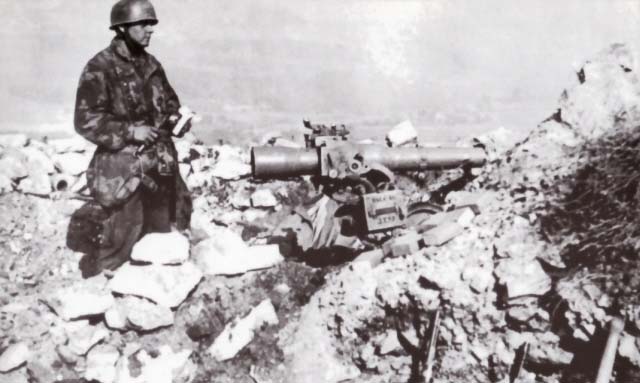
STRIKE: LG 40 75mm or LG 42 105mm Recoilless Rifle: the decisive ground weapon at Crete
As JU-52 planeload after planeload delivered German Para and Mountain troops with 75 mm recoilless rifles and mountain field guns towed by Kettenrad motorcycle/tracked vehicles the Allies thought couldn't be supplied by AIR to them (sounds like today's critics who think armored vehicles can't be air-delivered to the Airborne), marched across the island, backed by JU-87 Stuka dive bombers for Close Air Support (CAS) the Allies were pushed into the sea and a second "Dunkirk". A fore-runner for today's A-10 Close Air Support (CAS) aircraft. AIR-MECH-STRIKE.
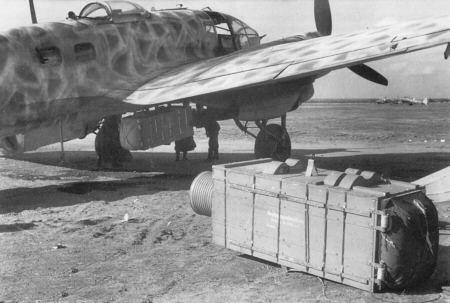
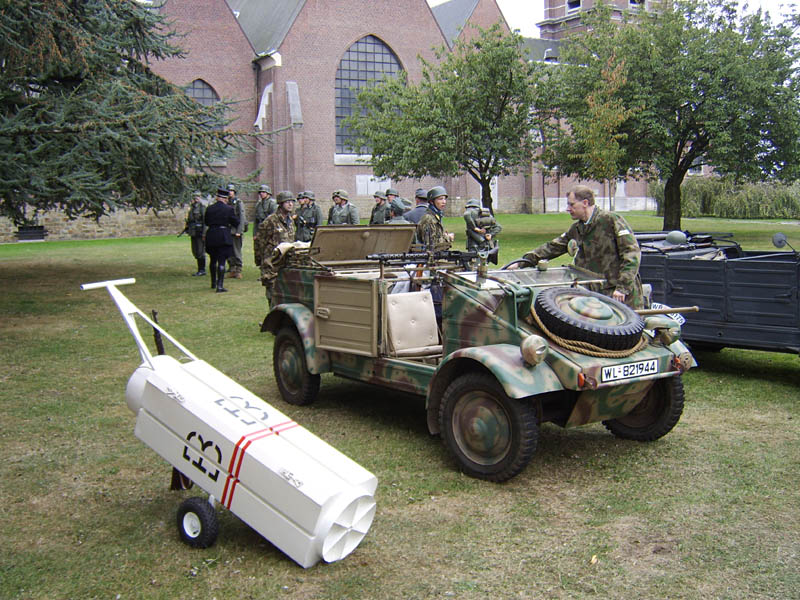
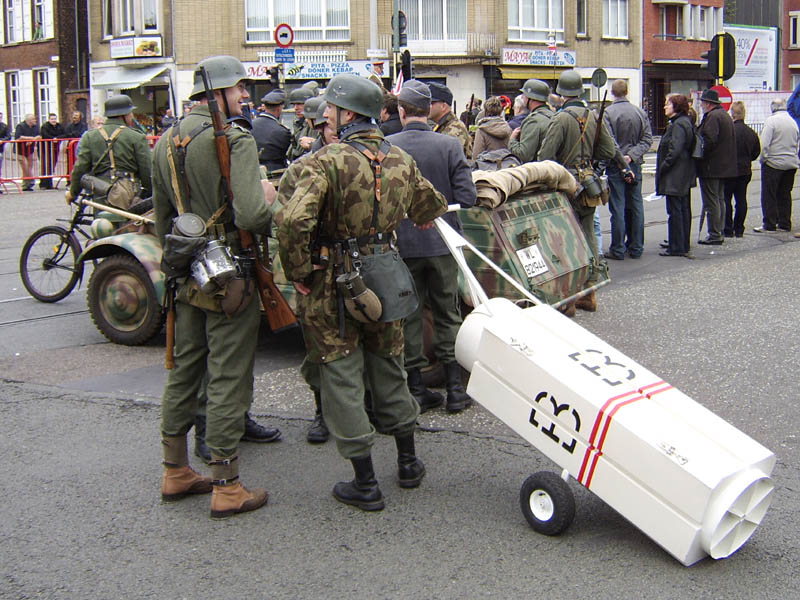
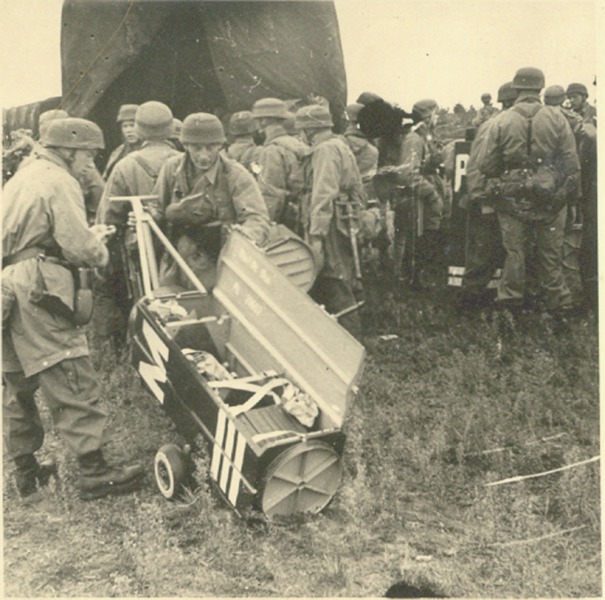
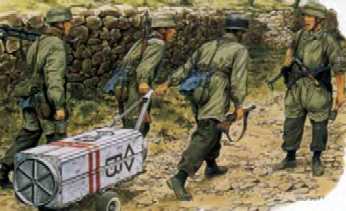
 Excellent German Airdrop Container Web Page!
Excellent German Airdrop Container Web Page!
www.fallschirmjager.net/Vehicles/DropCanister/index.html
German Airdrop Container Manual
www.fallschirmjager.net/Vehicles/DropCanister/documents/Abwurfbehealter%20250%20Mischlast.pdf
Towed right behind the Fallschirmjaegers were extra ammunition in equipment bundles with wheels. The British Airborne later created a collapsible cart, used successfully throughout the war after studying the German wheeled equipment containers. The American Airborne P-9 paracontainer was dropped from below C-47s as bundles and had wheels for hand towing thereafter. We can do the same today with SKEDCO and UT 2000 ATACS systems. In summary, while the Germans were the first to use Airborne "blitzkrieg" tactics effectively in war, their JU-52 Junkers tri-motor exit doors were too small for them to exit with infantry weapons attached; a major handicap we were lucky to have befall them. In fact, if you look closely they used a head-first exit out the Ju-52.
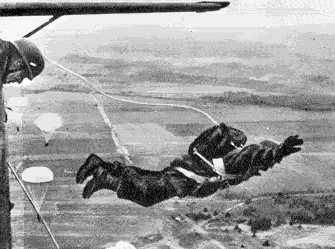
Thus, they had to drop long weapons from underwing and JU-52 bomb bay containers that were seperated from them upon landing. The Clint Eastwood/Richard Burton film thriller, Where Eagles Dare opens with them disguised as German troops parachuting from a captured "Iron Annie" to assault a castle held by German mountain infantry. Upon landing, they had to locate their equipment containers for their sabotage mission.
www.youtube.com/watch?v=O0nWE4XQdMM
Ironically, years later in 1983, the Cubans defending the strategically important, 10,000 foot runway at Point Salines airfield on the island of Grenada, made the same kind of miscalculation that Freyberg did on Crete; by digging in expecting to easily slaughter U.S. marines wading ashore--that thanks to superb USN SEAL Team 4 reconnaissance--never came--as U.S. Army Rangers parachuting at 500 feet under enemy air defense guns, took the airfield by AIRBORNE, not seaborne assault. The 82nd Airborne Division, then flew in by airlanding pushed out from the "airhead" and together, when the seaborne forces did arrive, secured the island. A long-distance "Crete"-type AIRBORNE victory without the high casualties or much help from seaborne forces.
Napoleon said:
"Time spent in reconnaissance is never wasted"
BE ABLE TO STEER, AND LEAVE YOUR PARACHUTE FAST
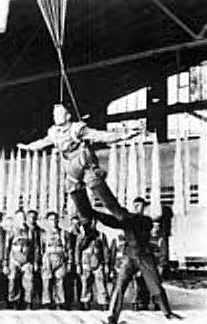
The next major technohandicap of the German Paratrooper was his RZ-16 parachute; it hung him high at his back so he had no control of where it would go, American T-5 and T-7 parachutes hung at the shoulders so their risers could be pulled or "slipped" to spill air out the side of the canopy for some steering. So to compound matters further, the German Paratrooper couldn't use his time under canopy to descend closer to his equipment bundles or avoid landing obstacles that could injure him.
EQUIPMENT WORN BY THE BRITISH PARATROOPER IN WWII: note parachute quick-release

One thing neither Airborne forces had until the end of the war was a quick-release so the Paratrooper could exit the harness quickly in event of wind dragging/enemy firing. The Germans issued a gravity-knife so their men could cut themselves free if need be. Note it has a knot untying spike to help untangle their lines for personal repacking! We developed the T-7's "dial-of-death" turn and punch release at the harness center but this was proven unreliable. It was not until 1960 that Capewell-type "Canopy Release Assemblies" were adopted to U.S. T-10-type parachutes.
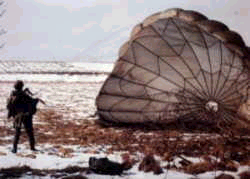
Men were getting killed after being dragged by the wind while we sang "Blood on the Risers" in the enlisted/officer clubs when we should have been in the Rigger shed thinking and talking to industry to get a quick-release on the risers. Today's Paratrooper needs a better T-10 "D" or "T-21" parachute with reserve off his chest and kit bag off his leg straps to speed his harness exit.
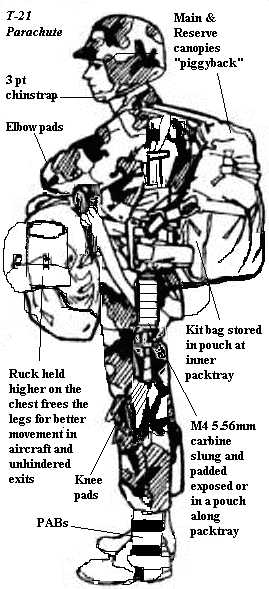
After Crete, the German Airborne floundered, which was good for freedom since the flat plains of Russian would have been perfect for Airborne operational maneuver. The Germans might have been able to seize Moscow before winter set in, and the entire history of the world could have been---WORSE. A lot of the negative perceptions surrounding Paratrooping comes from these equipment flaws now solved. The "little things" do count. We might be speaking German today, otherwise.
CARRYING ENOUGH TO WIN THE BATTLE: POCKETS OR RUCKSACKS?
General Gavin wrote in his book, On to Berlin that his men were jumping every scrap of ammo they could carry in their pockets---"those devils in baggy pants" the Germans at Salerno called them. The legacy of the 504th Parachute Infantry Regiment "baggy pants" lives on today as the Battle Dress Uniform (BDU) with its many pockets, another invention of the then, CPT William Yarborough, still going strong today in NC, now a retired General. They had to stuff their pockets because they didn't have the large rucksacks we have today.
Slowly as time wore on, the G.I. haversack jumped in the Korean War became the ALICE ruck of today, and God forbid the usmc monstrosity, the MOLLE which is TWO rucks detachable as modules or together as one. If rucks like these are filled with ammo and the Paratrooper lands with them attached he's likely to be hurt. Moving them forward into battle against enemy fire is another matter entirely. This is why we must lower them before landing.
PROBLEM #1: GETTING OUT OF THE AIRPLANE
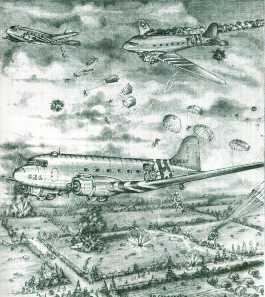
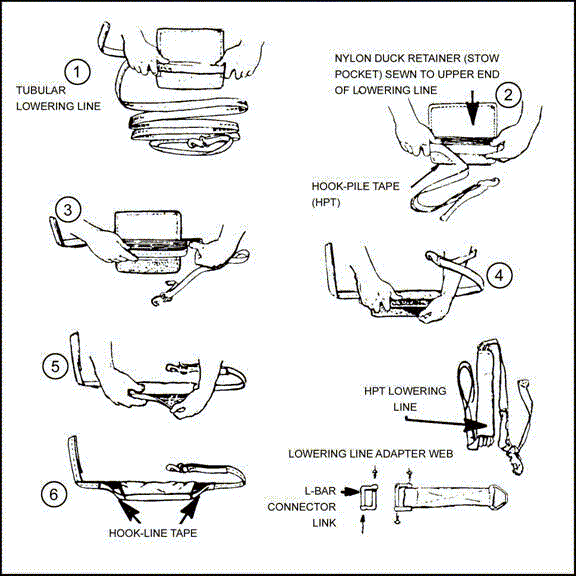
PROBLEM #2: FOLDING THE HPT LL TIGHT
The second problem is, to get it to fit, the S-folded nylon lines have to be held down REALLY TIGHT to pack them down and stretch the not-long-enough nylon flap with the VELCRO(c) around them. I suggest getting a buddy to hold down the nylon line as you fold on a hard, flat surface. This may not be "macho" to use teamwork, so the other way is to get a small fat rubber band used to secure your HPT LL to the rucksack frame (they are the bands used to hold static-lines on the outside of parachutes) and slip it over the HPT LL top strap and use it to hold down one end of your S folds as a sort of "third hand". When you are finished, fold over the not-long-enough VELCRO(c) cover flap and remove the rubber band to close the HPT LL completely.
If you examine the HPT LL you will see that it has a quick-ejector snap that attaches to the parachute harness on an equipment V-ring and a looped end on the other side. This looped end is "girth hitched"; by looping it through itself at the "X" where the Harness, Single Point Release (HSPR) straps cross. See drawing below in the center of the rucksack. You'll see the HPT LL connected at the HSPR "X" and held at the ruck frame to your left by bands girth-hitched rubber bands.
PROBLEM #3: UNHOOKING YOU LOWERING LINE TO CARRY YOUR RUCKSACK
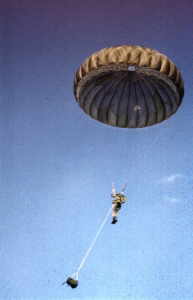
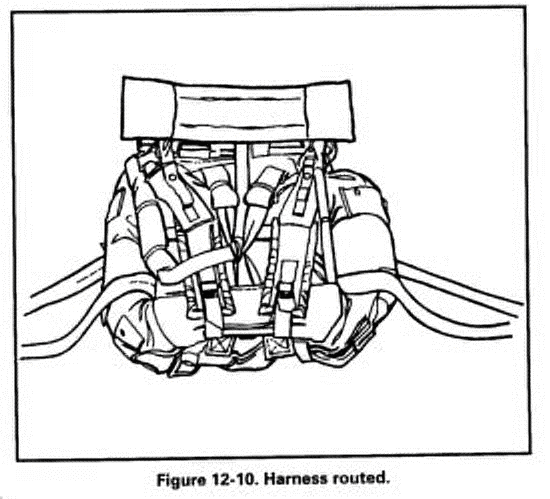
The problem here is that when you land, that girth-hitch is very tight---as it had to stop a falling rucksack of 50-100 pounds and hold it swinging below the Paratrooper. You cannot afford to be trying to undo the girth hitch to free your ruck under enemy fire, nor to disconnect the HPT LL at the parachute harness and just throw 15 feet of line into a ball and stuff it into your rucksack. This line is asking to come out and tangle into something. The solution is to disconnect the HPT LL from the rucksack instantly.

This can be done by girth-hitching the HPT LL to a snap-link (carabiner) and snap-linking to the HSPR "X". With a tensile strength of over 5000 pounds, the snaplink is more than strong enough for the job. Upon landing, you undo the HPT LL from the rucksack at the snaplink and toss the whole mess away or stuff it completely into a BDU pocket. Pull out your rucksack shoulder straps and put it on to exit the DZ FAST....
Simple, land (PLF), undo a canopy release, get your weapon, get out of your harness, follow the HPT LL to your ruck, disconnect it, put it on and go!
PREVENTION IS BETTER THAN CURES: THE NEXT GENERATION HPT LL?
Its hoped that the next HPT LL will have some quick-release snap or even a friction buckle that a quick-release fold could be put into it so the snaplink doesn't have to be used to get a quick release from the HSPR "X"ed straps. There should be more covering to secure the folded line and perhaps a helper elastic loop to hold down the end while S folding. The quick-rejector snap can hang up and should be replaced with a "Pelican Clip" like used to disconnect the reserve static-line on ram-air parachutes.
FEEDBACK TO THIS WEB PAGE!
"Hello,
I am a Paratrooper of a LRS company, my supply sergeant does not know the stock number for a HPT lowering line. We have none, and I am unable to jump with my combat equipment. Do you know what the NSN national stock number is to one so he can order me one? If you can help, then great, but if you can't, that is fine too. Great web page".
Our reply:
Always go to google.com:
hook pile tape lowering line nsn
Answer:
Click on cache so the key words are highlighted:
http://www.google.com/search?q=cache:vchEFOpJXgEC:www.adtdl.army.mil/cgi-bin/atdl.dll/fm/57-220/ch12.htm+hook+pile+tape+lowering+line+nsn&hl=en&start=6
HPT lowering line (NSN 1670-01-067-6838)
Airborne!
Mike
Operation Typhon
4/14/98 9:18:16 AM
"One of the last German combined operations was the invasion of Leros (Dodecanse island chain, eastern Aegean) on 12-17 Nov 43. This involved 1 Bn, 2nd Fallschirmjaeger, elements of the 22nd Airlanding Infantry Division and some Brandenburgers. The island was defended by the Malta Brigade, along with substantial Italian forces.
As far as shoestring invasions go, it suceded (1,000 Germans taking an island defended by 5-7,00 Brit/Italian defenders) but the Airborne landing was a Charlie Foxtrot... dropping under fire onto a DZ 1/2 the size needed. The edges of the DZ were cliffs, dropping down to the bay.
The Fallschirmjaeger took about 40% casualties, between being shot in the silk and busting their butts on landing.
As far as planning goes, LTG Muller (German OC) did base his plans on what happened on Crete. however, cross-talk between Paras, Navy, Army and the 22nd was less than perfect.
Had the RAF/USAAF had a decent presence, German losses would have been substantially higher.
Seems like the difference between Allied and German combined landing opns was the lack of Kreigsmarine naval gunfire support.
To keep the tanker-phanatics happy, Leros was too small and rocky for Airborne tanks.
However, Crete wasn't... so what would air-landed Mk I or Mk II's done? There were some Vicker's Mk VIB/C's and Matildas on Crete, as i remember.
Interesting hypothetical wargame situtation, 7.5 cm Recoilless Rifles on air-landed captured Bren carriers vs. Matildas.
I don't think there was anything else in the German inventory that could be airlanded in 1941 and still hole a Matilda... was there?
Adam (From The Tanker's Forum)"
WRONG. The LG40 and 42 RRs could incinerate Matilda medium tanks.
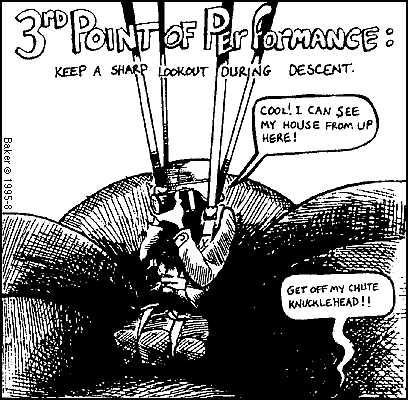
 Return to U.S. Army Airborne Equipment Shop
Return to U.S. Army Airborne Equipment Shop